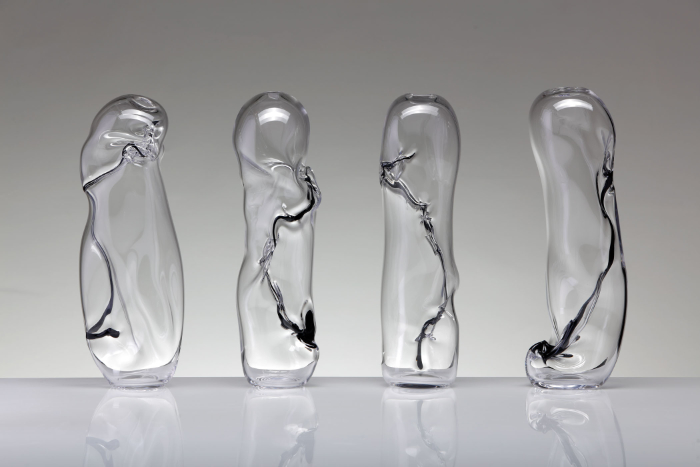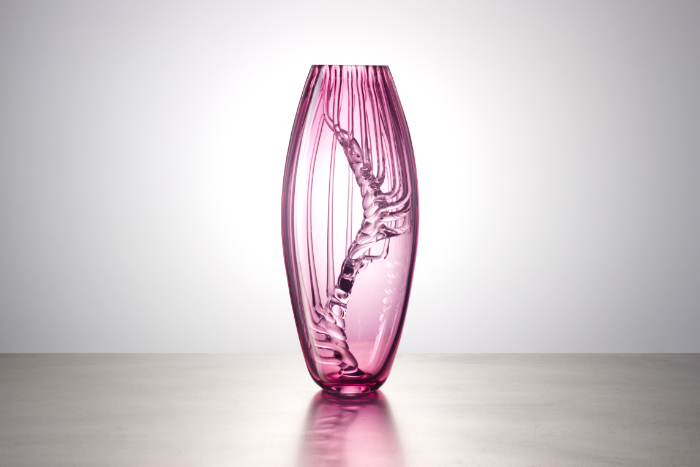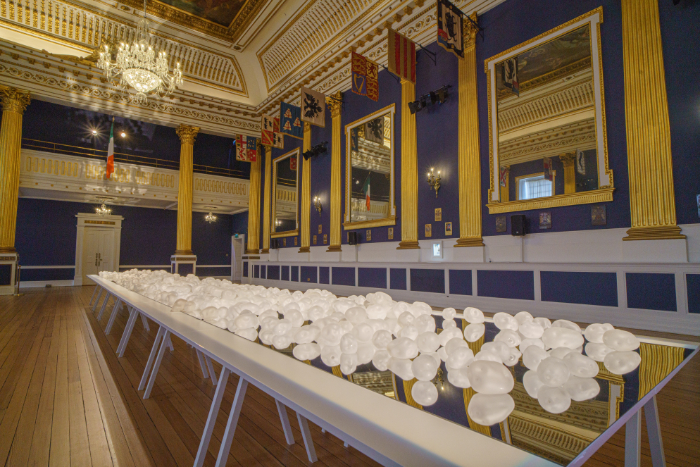
Creative chameleon
Paula Stokes has worn many hats in the art world, including being a glassmaker and supporter of the glass community through teaching and establishing an art gallery. With her latest, poignant work, featuring 1845 glass potatoes, she hopes to elicit compassionate reflection on the past. Linda Banks finds out more.
You have had a varied career in the arts, as a maker, facilitator, educator and gallery co-founder. What led you to start working with glass?
I discovered hot glass as an artistic material at the National College of Art and Design in Dublin, Ireland. I was drawn to it immediately. It seemed dangerous, exciting, and just really cool! I had absolutely no natural affinity to working with the material. It was too hot, uncomfortable and uncontrollable. But I didn’t know any better, so stuck at it, for better or worse.
What glass techniques have you used and which do you prefer?
I am primarily a glassblower. I like the immediacy of working in that technique and the social interaction of working within a team.
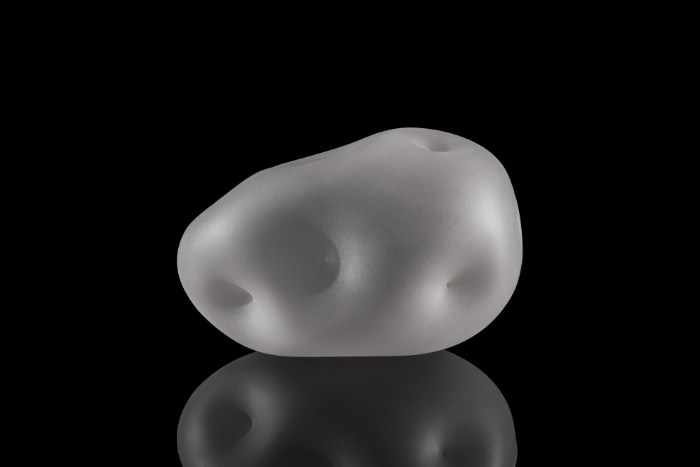
What is your creative approach? Do you draw your ideas out or dive straight in with the materials?
My most recent work, ‘1845: Memento Mori’, a memorial to the 19th century Great Irish Famine, slowly evolved over 20 years. Its inspiration was more personal. It partly came from my reflections as an Irish immigrant living in the United States, grappling with a sense of displacement and national identity. It was also a response to an increasingly divisive political atmosphere, both in the States and globally.
I spent four years creating this work and exhibiting it in eight different museums and heritage sites in the US, Ireland and Great Britain. I was the artist, producer, director, art handler, fundraiser and PR person on this project. Right now, I am taking a much-needed creative pause.

You have made some impressive art installations. What message(s) do you want to convey through your art?
In ‘1845: Memento Mori’, I want to commemorate and humanise a specific time in Irish history, and its effects on so many people – those who perished, those who emigrated and those who survived and stayed. I want people to be drawn in and to reflect upon it in their own personal way, and hopefully provoke compassion towards others, especially now. One does not need to be Irish or of Irish heritage to understand the horror and tragedy of this period in Irish history.
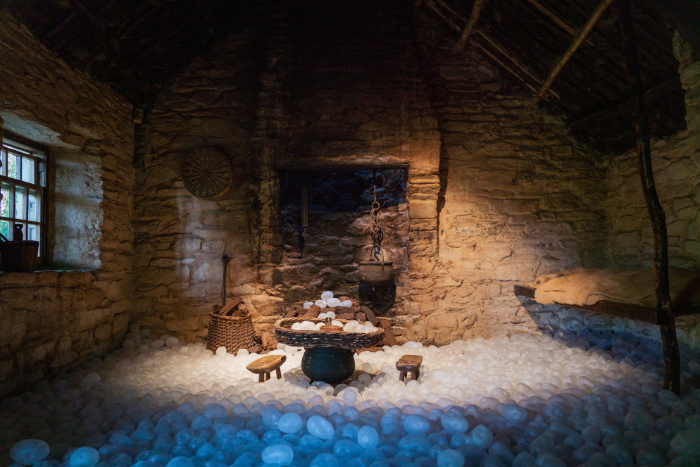
What is your favourite tool or piece of equipment and why?
I love the woodworking awl I use for poking dents into my glass potatoes, and I also love the oxy-propane torch for fire-polishing punties.
Do you have a favourite piece you have made? Why is it your favourite?
I have a piece by my bed that I made when I was 20 years old. It’s a two-piece sculpture that looks like a treble clef. I love it because it was one of the first pieces that I made that had really good composition and design, and also it was one of the first pieces I sold (the collector gave it back to me when she was downsizing).
You set up the METHOD gallery in 2013. What was the thinking behind this decision?
I co-founded METHOD, a non-profit gallery, with three other artists. We all recognised a need for a physical space where artists could experiment and explore concepts and ideas on a large scale, without the pressure to sell the work, and with the support of other artists in a nurturing environment.
For many of the exhibiting artists, including myself, our exhibitions became the visual steppingstones to bigger and larger opportunities in museums and public art commission.
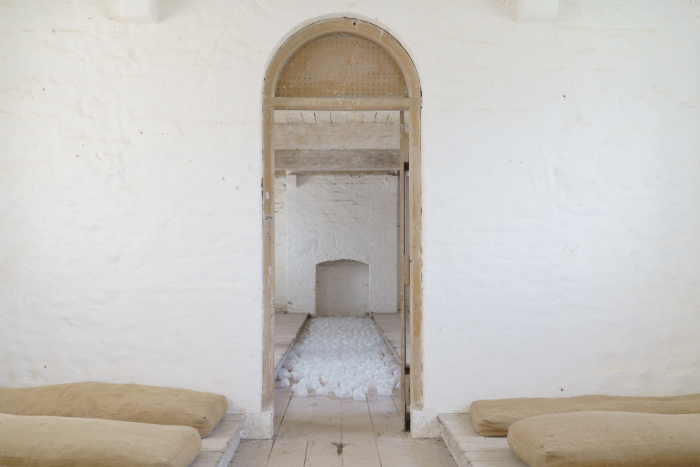
What would you say are the greatest challenges for people starting out on a glass career? What advice would you give to someone launching a creative career?
One of the biggest challenges I see right now is access to education. So many of the formal glass programmes in colleges and non-profits are being cut or closed. In the absence of access, traveling abroad may be necessary. Yet, on a positive note, there are programmes, like the Hilltop Artists in the US, that are thriving.
My advice for anyone launching a creative career is to be prepared to be a multi-tasker. Unless you are Dale Chihuly, you will need to not only be the creative force but also the accountant, the grants writer, the social media maven and the salesperson. Most artists are self-employed and have no financial safety net, so save whatever you can for the future. Diversify your skillsets – teach, work in arts administration, or volunteer your time to support others in the arts community.
Do not take rejection from open calls personally (I know that is harder than it sounds). Know your niche and your audience. Stay true to yourself, be authentic and be generous to others. What goes around comes around.
Do you have a career highlight?
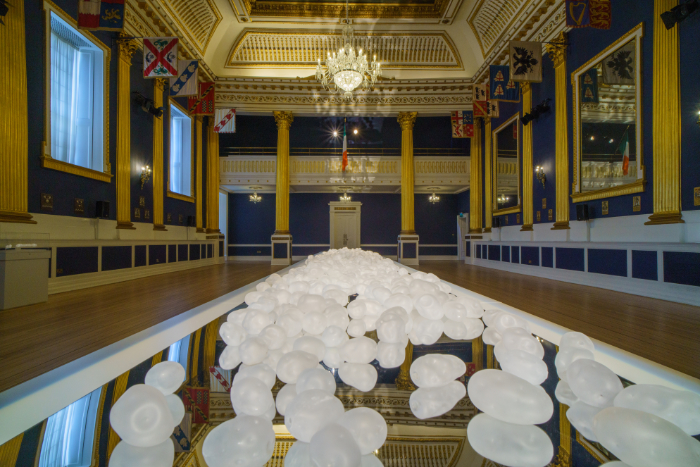
A major career highlight for me was the opening night launch of ‘1845: Memento Mori’ in Saint Patrick’s Hall at Dublin Castle, by President Mary Robinson. I have enormous respect for her and her humanitarian work. It was the first major public opening of my exhibition in the wake of the COVID-19 pandemic.
I created a 40-foot-long mirrored banquet table, piled with ghostly glass potatoes and placed it the most significant and prestigious room in Irish political and historical life. During the Famine, the elite would attend lavish banquets in this room, while the less fortunate starved. The juxtaposition of a contemporary political work in this space was unprecedented, and its presence confronted a complicated past.
Where is your practice heading next?
I am not creating new art now. Instead, I am flexing my arts administrative skills as a consultant for Refract Seattle, an annual glass festival. I extend an invitation to you to come and visit Seattle and look me up for that event, which takes place from 17-20 October 2024.
About the artist
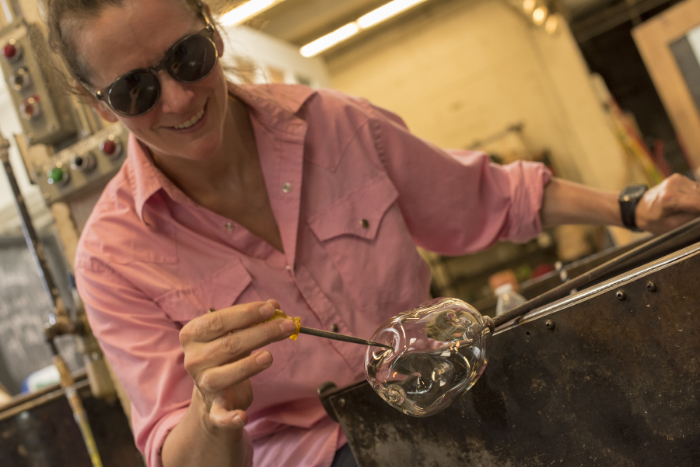
Paula Stokes is an Irish artist based in Seattle, US. Since moving to the US in 1993, she has worked extensively within visual arts management and education, in the non-profit (Pratt Fine Arts Center, Pilchuck Glass School and METHOD Gallery) and for-profit (Chihuly Studio) sectors.
Stokes’ artwork has been exhibited in the US and Ireland and is part of the National Museum of Ireland’s permanent collection.
Watch this video to find out more about the creation of her ‘1845: Memento Mori’ artwork: https://vimeo.com/585674270or visit the website: https://www.1845mementomori.com
Find out more about Paula Stokes via the website: https://www.paulastokes.com or follow on Instagram: @glass_potatoes
Main feature image: ‘1845: Memento Mori’ in the elegant surroundings of St Patrick’s Hall, Dublin Castle, Ireland.
